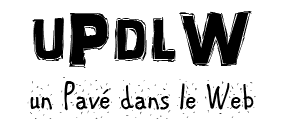Creativity can seem like magic. We look at people like Steve Jobs and Bob Dylan, and we conclude that they must possess supernatural powers denied to mere mortals like us, gifts that allow them to imagine what has never existed before. They’re « creative types. » We’re not.
But creativity is not magic, and there’s no such thing as a creative type. Creativity is not a trait that we inherit in our genes or a blessing bestowed by the angels. It’s a skill. Anyone can learn to be creative and to get better at it. New research is shedding light on what allows people to develop world-changing products and to solve the toughest problems. A surprisingly concrete set of lessons has emerged about what creativity is and how to spark it in ourselves and our work.
The science of creativity is relatively new. Until the Enlightenment, acts of imagination were always equated with higher powers. Being creative meant channeling the muses, giving voice to the gods. (« Inspiration » literally means « breathed upon. ») Even in modern times, scientists have paid little attention to the sources of creativity.
But over the past decade, that has begun to change. Imagination was once thought to be a single thing, separate from other kinds of cognition. The latest research suggests that this assumption is false. It turns out that we use « creativity » as a catchall term for a variety of cognitive tools, each of which applies to particular sorts of problems and is coaxed to action in a particular way.
Does the challenge that we’re facing require a moment of insight, a sudden leap in consciousness? Or can it be solved gradually, one piece at a time? The answer often determines whether we should drink a beer to relax or hop ourselves up on Red Bull, whether we take a long shower or stay late at the office.
The new research also suggests how best to approach the thorniest problems. We tend to assume that experts are the creative geniuses in their own fields. But big breakthroughs often depend on the naive daring of outsiders. For prompting creativity, few things are as important as time devoted to cross-pollination with fields outside our areas of expertise.
Read more at The Wall Street Journal
De belles images pour promouvoir le livre de Jonah Lehrer : Imagine.
Article publié dans The Creativity Post.
